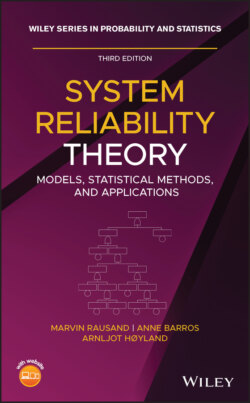Читать книгу System Reliability Theory - Marvin Rausand - Страница 148
Secondary Failures
ОглавлениеA secondary failure, also called overstress or overload failure, is a failure caused by excessive stresses outside the intended operating context of the item. Typical stresses include shocks from thermal, mechanical, electrical, chemical, magnetic, or radioactive energy sources, or erroneous operating procedures. The stresses may be caused by neighboring items, the environment, or by users/system operators/plant personnel. Environmental stresses, such as lightning, earthquake, and falling object, are sometimes called threats to the item. We may, for example, say that lightning is a threat to a computer system and that heavy snowfall and storm are threats to an electric power grid. The overstress event leads to a secondary failure with some probability that depends on the stress level and on the vulnerability of the item. Overloads of software systems may also be classified as secondary failures.
A secondary failure usually leads to an item fault, and a repair action is usually necessary to return the item to a functioning state. The structure of a secondary failure is shown in Figure 3.9. Secondary failures are generally random events, but it is the overstress event that is the main contributor to the randomness.
Figure 3.9 A secondary failure, caused by an overstress event, leading to an item fault.
